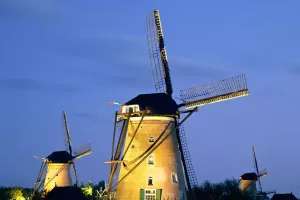Cervus elaphus, commonly known as the red deer, is one of the largest and most iconic deer species in the world. With its majestic stature, impressive antlers, and striking red-brown coat, the red deer has captivated the imagination of humans for centuries. Let's delve into the details of Cervus elaphus, exploring its physical characteristics, habitat, behavior, and significance.
Physical Characteristics:
The red deer is a large mammal, with males, known as stags, standing at an average shoulder height of 1.2 to 1.5 meters (3.9 to 4.9 feet) and weighing between 160 and 240 kilograms (350 to 530 pounds). The females, or hinds, are smaller, measuring around 1.1 to 1.3 meters (3.6 to 4.3 feet) at the shoulder and weighing between 120 and 170 kilograms (260 to 370 pounds). The most notable feature of the red deer is its impressive antlers, which are typically grown and shed annually. These antlers can measure up to one meter (3.3 feet) in length and have multiple tines branching off from the main beam.
Habitat and Distribution:
Red deer are native to Europe, Asia, and North Africa. They inhabit a diverse range of environments, including forests, woodlands, grasslands, and even mountainous regions. Red deer have adapted to various climatic conditions, from the cold boreal forests of Scandinavia to the hot and arid landscapes of Spain. Additionally, red deer have been introduced to several other regions, such as North America, New Zealand, and Argentina, where they have established thriving populations.
Behavior and Social Structure:
Red deer are primarily herbivores, feeding on a variety of plants, including grasses, herbs, leaves, and tree bark. They are known for their ability to migrate over long distances in search of food and suitable habitats. Red deer are crepuscular animals, meaning they are most active during dawn and dusk. During the breeding season, known as the rut, male red deer engage in fierce battles to establish dominance and gain access to females. Their distinctive bugling calls echo through the landscape as they advertise their presence and prowess.
Red deer are social animals, forming herds that typically consist of females and their young, while adult males tend to be solitary or form small bachelor groups outside the breeding season. The herd is often led by a dominant female, known as the matriarch. The females give birth to a single calf, known as a fawn, after a gestation period of around 8 months. The fawns have reddish-brown coats with white spots, providing camouflage and protection.
Ecological Significance:
The red deer plays a vital role in shaping and maintaining ecosystems. As herbivores, they contribute to seed dispersal and vegetation control, preventing certain plant species from becoming dominant. Additionally, their grazing habits can create open spaces within forests, promoting plant diversity and providing habitat for a range of other species. Red deer also serve as prey for carnivores, including wolves and large cats, thereby influencing predator-prey dynamics.
Conservation and Human Interaction:
While red deer populations are relatively stable in some regions, they face threats such as habitat loss, poaching, and competition with livestock for grazing areas. Conservation efforts are crucial to ensure the long-term survival of this iconic species. In some areas, sustainable hunting practices are implemented to maintain balanced populations and support local communities.


